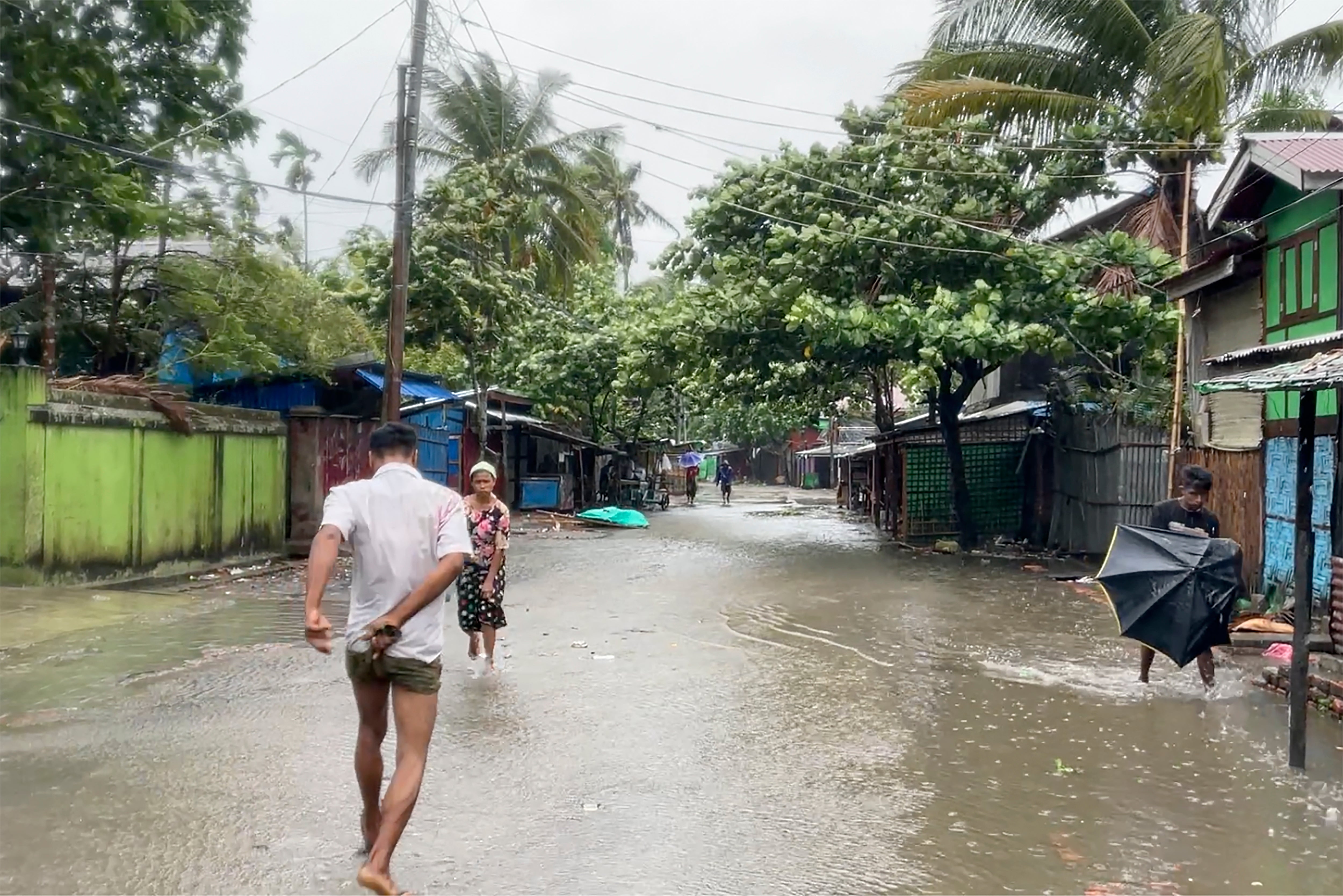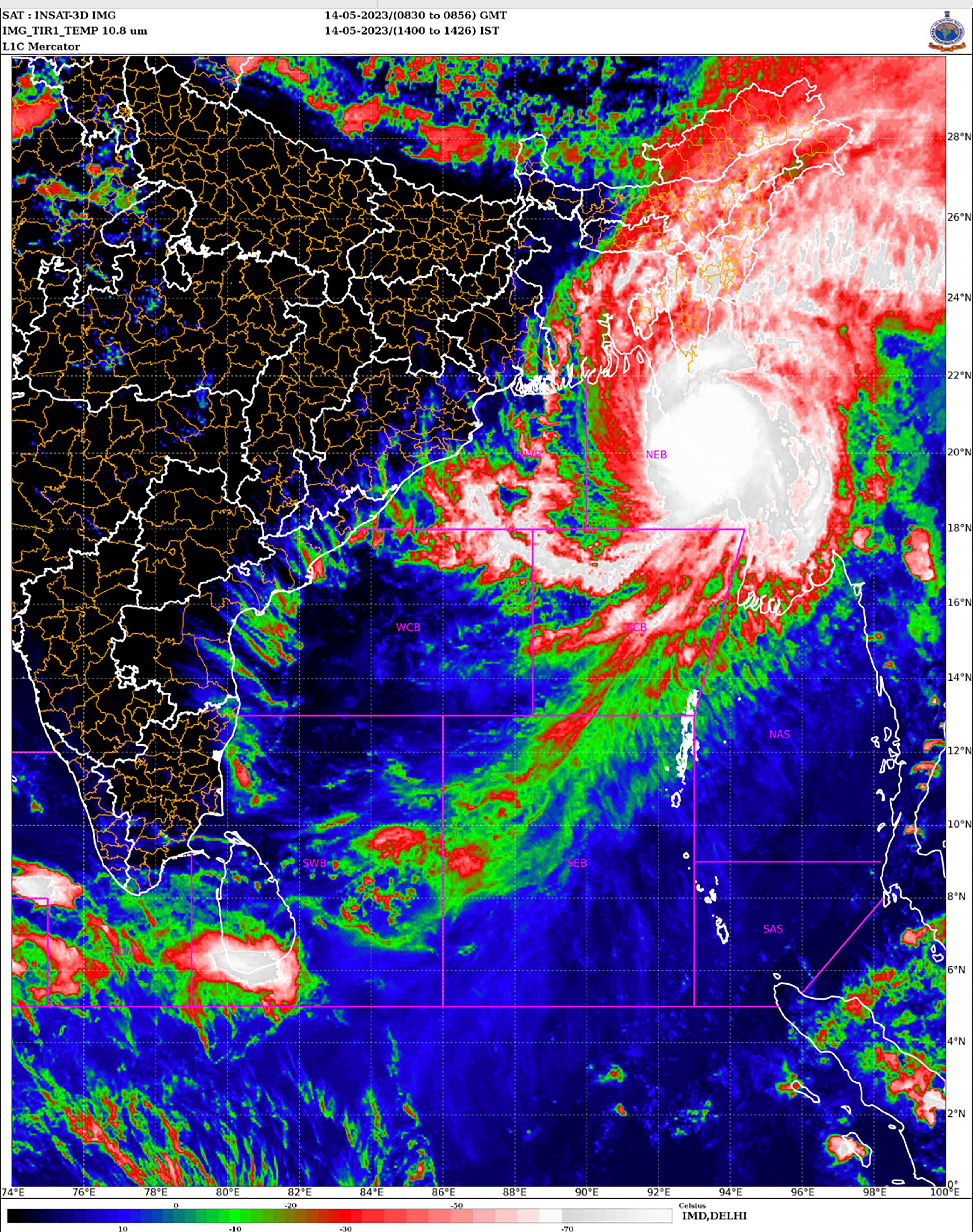Cyclone Mocha: ‘At least a hundred’ feared dead as rains lash Myanmar, Bangladesh, India
Aid groups acknowledged a ‘significant number of deaths’

Your support helps us to tell the story
From reproductive rights to climate change to Big Tech, The Independent is on the ground when the story is developing. Whether it's investigating the financials of Elon Musk's pro-Trump PAC or producing our latest documentary, 'The A Word', which shines a light on the American women fighting for reproductive rights, we know how important it is to parse out the facts from the messaging.
At such a critical moment in US history, we need reporters on the ground. Your donation allows us to keep sending journalists to speak to both sides of the story.
The Independent is trusted by Americans across the entire political spectrum. And unlike many other quality news outlets, we choose not to lock Americans out of our reporting and analysis with paywalls. We believe quality journalism should be available to everyone, paid for by those who can afford it.
Your support makes all the difference.Death toll from cyclone Mocha, the deadliest storm to strike Myanmar, has risen up to “at least a hundred” as its impact is felt across Bangladesh and northeast India as well.
Although the exact death toll is yet to be known, residents of the western region told news agency Reuters that at least 100 people had died and many more were missing and feared dead.
AFP news agency quoted local leaders stating that the death toll stands at 41.
Activists have also raised concerns over aid efforts being hampered in the least developed Asian country. The area where the cyclone hit was home to many Rohingya refugees.
The cyclone, packing winds of up to 210kph (130 mph), ripped off roofs, caused severe flooding in the state capital Sittwe, and severely disrupted infrastructure.
One resident, who preferred to remain anonymous due to safety concerns, told Reuters that he visited multiple villages in the aftermath of the cyclone and estimated the death toll of Rohingya Muslims to exceed 100.
Two other residents and a diplomatic source also confirmed a high number of casualties.
Myanmar Now, a local news portal, stated that hundreds were feared dead, while aid groups acknowledged a "significant number of deaths."
Myanmar's state media, on the other hand, reported three fatalities.
The damage caused by the cyclone, combined with ongoing restrictions imposed by Myanmar's military government, has hindered relief efforts and communication.
NGOs operating in the area expressed difficulty in obtaining accurate information, exacerbating the challenges in responding effectively to the crisis.
“It’s difficult to obtain accurate or up to date information, which also makes responding to the crisis adequately even more difficult,” said Manny Maung of Human Rights Watch, adding that many were missing and feared dead.
The United Nations Office for the Coordination of Humanitarian Affairs (OCHA) highlighted that even before the cyclone, approximately 6 million people in the region required humanitarian assistance, including 1.2 million internally displaced individuals affected by ethnic conflicts.
Rakhine State is no stranger to disasters, having previously faced the devastation of Cyclone Nargis in 2008, which claimed nearly 140,000 lives.
The current storm's destruction, coupled with damaged communication and road infrastructure, has made it challenging to assess the extent of the damage and provide aid promptly.

Prior to the cyclone’s landfall, approximately 400,000 people were evacuated in Myanmar and neighboring Bangladesh.
Meanwhile, at least 236 houses and eight refugee camps were reported damaged in the northeastern Indian state of Mizoram, officials said.
A total of 5,749 people in more than 50 villages were affected by the powerful winds. However, there were no reports of fatalities.
Bangladesh, which was largely spared by the cyclone, faced its worst power cuts in over seven months as the deadly storm forced the closure of both its floating liquefied natural gas (LNG) terminals, less than a month after a scorching heatwave caused widespread outages in the south Asian country.
Climate experts have raised concerns that there has been a substantial increase in cyclonic activity in South Asian waters, which is linked to rising ocean temperatures.
Warming in the oceans has led to higher evaporation and increased availability of moisture due to global heating. Experts said cyclones can now retain their energy for many days and cause extensive devastation.
“Weather conditions in the ocean are very supportive for rapid intensification of the system,” said Roxy Mathew Koll, climate scientist at the Indian Institute of Tropical Meteorology and Lead IPCC author.
“Cyclones nowadays can retain their energy for quite a long number of days. One example of this trend was cyclone Amphan which continued to travel over land as a strong cyclone and resulted in massive devastation.”
“As long as oceans are warm and winds are favourable, cyclones will retain their intensity for a longer period,” he adds.
According to a new rapid analysis led by professor Ralf Toumi of Imperial College London, a cyclone like the one that made landfall in Myanmar is now about 50 per cent more likely to happen, because of the climate crisis.
Tropical cyclones are one of the most devastating natural disasters, costing more than half a million lives all over the world in the last five decades.
The Indian Ocean region, including the Arabian Sea and the Bay of Bengal, is of particular concern because of the high population density along its coastlines.
Additional reporting by agencies



Join our commenting forum
Join thought-provoking conversations, follow other Independent readers and see their replies
Comments